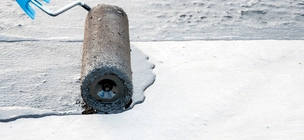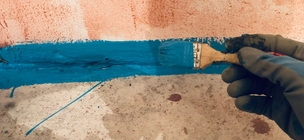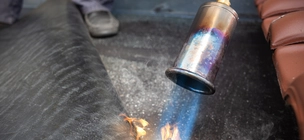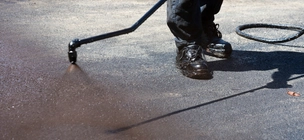Water pooling on your flat roof can be alarming and lead to bigger issues if left unaddressed. By prioritising roof waterproofing, you’ll prevent labour-intensive repairs, keep your interior safe, and ensure your home stays protected from the elements. If you’ve been battling leaks, damp walls, or unsettling stains, this article helps you spot the cause and find solutions.
Understanding the causes of water pooling:
- Poor slope design: Flat roofs aren’t always perfectly flat—they need a slight slope to guide water towards drainage. If this design is flawed or neglected during construction, water accumulates easily, leading to roof drainage problems.
- Clogged gutters and drains: Debris, leaves, and dirt can clog gutters. If they’re blocked, water will have nowhere to go, causing standing water that undermines your roof waterproofing layer.
- Worn-out materials: Over time, UV rays and harsh weather cause roofs to crack or peel. When a membrane deteriorates, you get waterproofing issues that allow rain to seep in, heightening mould growth risk and internal damage.
- Insufficient maintenance: Skipping routine flat roof maintenance can be a recipe for trouble. Minor wear and tear compound, eventually resulting in water accumulation on the roof.
- Structural problems: Sometimes, dips or sags in the roof’s framing create pockets where water gathers. Structural settling can also cause cracks in basement walls, potentially leading to basement flooding in severe cases.
When water starts pooling, you might also notice roof discolouration or a damp, musty smell from the ceiling—early warning signs that action is needed.

Left unchecked, these issues can escalate quickly. Let’s look at what can happen if you don’t address them in time.
The consequences of ignoring water accumulation on the roof
- Increased damage to the roof: Standing water seeps into vulnerable seams and cracks. Over time, this weakens the materials, requiring more extensive repairs.
- Threat of mould and mildew: Persistent moisture in the structure or basement flooding raises the risk of mould growth, which can harm indoor air quality.
- Higher repair costs: Delaying roof waterproofing can lead to more severe issues like rotted wood, damaged insulation, and even basement structural damage.
- Compromised living space: Leaks and damp conditions are not only unpleasant to live with, but they can also degrade your home’s overall value.
By staying on top of maintenance and promptly addressing roof drainage problems, you’ll sidestep the stress and expense tied to serious water damage.
Practical solutions to fix water pooling with roof waterproofing
Whether you’re looking for a quick fix or a thorough renovation, here are some steps you can take to combat water pooling on your flat roof.
1. Quick DIY fixes for minor pooling
- Clear roof drains and gutters: Use a ladder and protective gloves to remove debris from gutters and downspouts. Rinse with a hose to confirm the path is fully open. Neglecting this simple task can lead to roof drainage problems and amplify damage.
- Apply a temporary patch: For small cracks or punctures, you can use a roofing patch kit available at hardware stores. Clean the area thoroughly, cut the patch to size, and apply as instructed. Be mindful that this is not a permanent solution—especially if the area is already showing signs of weathering or deterioration.
If you suspect a broader structural or waterproofing issue, consider getting expert assistance to avoid repeated repairs down the road.
Relying on a professional at this stage ensures you tackle the root cause of water accumulation, rather than just the surface symptoms.
2. Re-sloping and drainage improvements
If heavy rains quickly lead to pooling, your roof might need re-sloping. A specialist assesses the area and installs tapered insulation or adjusts the roof structure to guide water into the drainage system. Coupled with thorough maintenance, you’ll extend your roof’s lifespan and reduce moisture risks. Also, consider adding or expanding drainage outlets if your current setup can’t handle the rainfall volume.

3. Comprehensive roof waterproofing with a protective membrane
This method involves removing old or damaged roof materials, then installing a fresh membrane that seals your roof against the elements. Here’s how professionals typically handle the process:
- Surface preparation: Removing debris, dirt, or peeling layers to create a stable surface.
- Applying a new membrane: This could be a liquid-applied coating or a rolled-on product, depending on your roof type. The goal is to form a uniform, watertight barrier.
- Sealing edges and seams: Specialists pay attention to high-risk areas—around ventilation pipes, skylights, and other protrusions—to prevent leaks.
- Final inspection: After curing, the membrane is checked for gaps or bubbles that might compromise protection.
This approach mitigates mould growth risk and preserves your investment in the long run. Proper flat roof maintenance after installation typically involves routine check-ups and cleaning drains of any build-up that causes waterlogging.
When done by an expert, roof waterproofing cuts down on emergency repairs, extends your roof’s life, and prevents future basement flooding by minimising infiltration throughout your home.

When to call a professional
- Chronic leaks that persist even after simple fixes
- Visible sagging or structural irregularities on the roof
- Signs of basement structural damage or ceiling cracks
- Excessive moss, mould, or foul odours when entering your home
Professionals have the expertise, equipment, and experience to identify the root cause and provide lasting solutions. You’ll save on future repairs and rest easy knowing the job is done right the first time.







